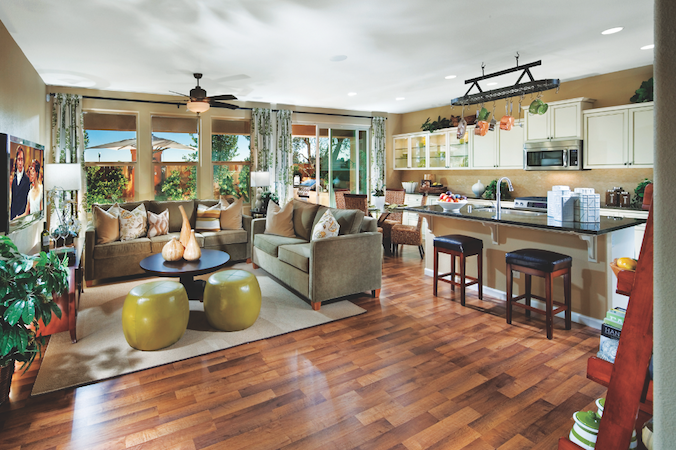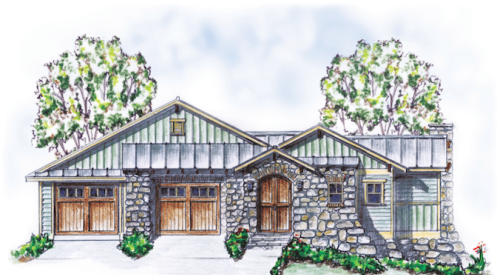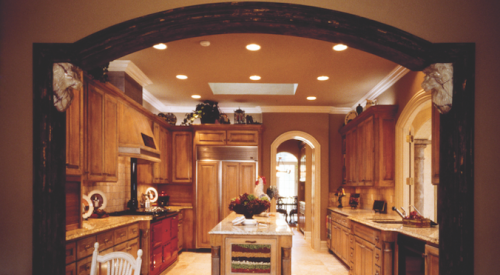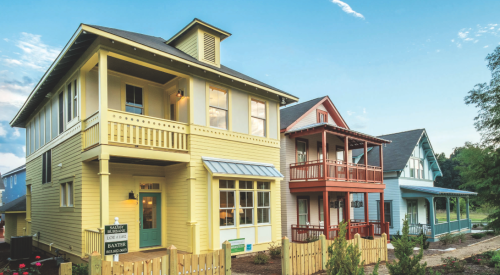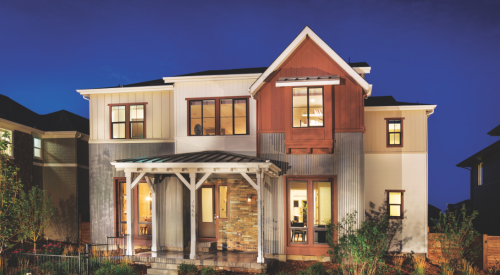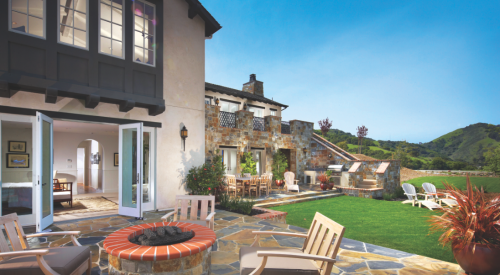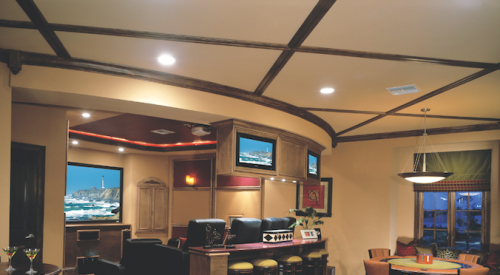In some ways, the great room hasn't changed. It's still the part of the home that brings the family together—where everyone gathers to talk, eat, read, watch television, listen to music, and relax. However, the linear configuration popular in great rooms before the housing crash is giving way to new forms and uses.
Five Great Room Trends
1. They're L-shaped rather than linear.2. They're connected to an outdoor space such as a loggia or summer kitchen.3. The kitchen, dining area, and great room are open to each other, but the individual spaces are more defined.4. Kitchens typically have large islands with seating for as many as seven people.5. There may be a secondary room off the great room called the warming room or hearth room.
Jerry Gloss, principal of KGA Studio Architects, in Louisville, Colo., declares, "The L shape is the new shape." In a home that KGA recently designed for a move-down buyer, "the linchpin is the kitchen, and the L forms around an outdoor space. It's the only dining space in the whole house, but it's a grand room. It feels big even though it's a 2,600-square-foot ranch."
RELATED
"The great room sort of made formal living a thing of the past, [though] more recently it has started to reappear in the form of a parlor or library," Garza adds.
Changing and Rearranging
In years past, the great room might be adjacent to the kitchen, separated by columns, hallways, and walls. While it was designed for entertaining, guests had a tendency to congregate in the kitchen. Now the great room is integral to both the dining room and kitchen, with an emphasis on functionality rather than formality. Eliminating hallways frees up livable (and furnishable) space.

Kitchen islands are getting bigger, says architect Robert Hidey; this one seats six. Builder: The New Home Company; Architect: Robert Hidey Architects; Photos: Chris Mayer
Sizing It Up
Great rooms are typically in proportion to the size of the home, Garza says. A 3,000-square-foot home might have a 15-by-22-foot, rectangular great room. In larger homes, the great room might be 19 by 27 feet. Hidey has designed great rooms that are as large as 25 by 30 feet.


The L shape is the new shape of great rooms nowadays, where the dining room and great room pivot around the kitchen. All three spaces wrap around a loggia.

This kitchen is more of an alcove than a separate room, opening to the high ceilings of the dining and living area. In this example, the fireplace and TV set share a wall. Builder: Burnette Builders; Architect: Burleson Design Group; Illustration: Burleson Design Group; Photo: Daniel Nadelbach

To facilitate entertaining, this kitchen, breakfast room, and great room open to a large veranda and summer kitchen. Builder/designer: Frankel Building Group; Photo and Illustration: Courtesy of Frankel Building Group

Floor space on the main level of this home is almost entirely devoted to the kitchen, dining room, and living room. The screen porch shares a fireplace with the living room, making it usable year-round. All of the spaces access an extensive deck system. Builder: Cataldo Builders; Architect: Wise Surma Jones; Plan: Wise Surma Jones


Architect Richard Handlen observes that the snack bar in this kitchen allows family and visitors to talk with the cook while looking over his/her shoulder to watch TV. No one has to walk in front of the TV to circulate through the room because the entertainment zone is at one end of the L. There's also access to the outdoors. Builder: Clarum Homes; Architect: EDI International; Photo: Mert Carpenter

Large windows open to a side yard, flooding this great room with light. Traffic flows easily through the island kitchen and around the dining-room table. Builder: Brookfield Homes; Architect: Starck Architecture; Illustration: Starck Architecture; Photo: Brookfield Homes

Designed for move-ups in need of more elbow room, this 3,149-square-foot home focuses the kitchen, nook, and grand room toward the rear patio. The media wall shares space with the fireplace. Builder: Platinum Homes; Giesen Design Studio; Plans: Giesen Design Studio

Here is a layout that makes circulating from the living area to the nook and kitchen and out to the covered patio an easy trip for party guests. Builder: McCaffrey Homes; Architect: Danielian Associates; Photo: Eric Figge

All of this home's public areas wrap around a loggia, bringing light into the space. Guests can wander out to the front porch from the dining room or head out to the back porch. Architect: RPGA Design Group; Plans: RPGA Design Group

Here the great room makes a grand statement at the front door, opening to an expansive outdoor space. A hearth room off the kitchen serves as a more intimate gathering place. Builder: Infinity Home Collection; Architect: KGA Studio Architects; Illustration: KGA Studio Architects; Photo: Jeffrey Aron

This plan has a warming room—sometimes called a hearth room—adjacent to the breakfast nook. Half walls define the dining room without completely separating it from the great room. Architect: RPGA Design Group; Plan: RPGA Design Group
